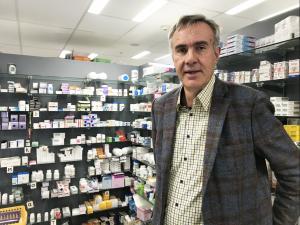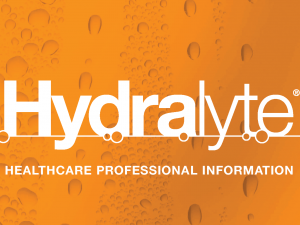Academic pharmacist Nataly Martini provides key information on Helicobacter pylori pathophysiology, diagnosis and evidence-based treatment strategies to enhance patient outcomes
Pharmacy minor ailments pilot improves access to healthcare
Pharmacy minor ailments pilot improves access to healthcare

- The community pharmacy minor ailments scheme pilot improved access but did not impact health service pressure.
- The pilot was found to be cost-effective compared to GP visits. Pharmacists involved reported increased job satisfaction and felt their clinical skills were better utilised.
- Te Whatu Ora will now work on developing a nationwide programme.
Our evaluation found evidence that improved access to care and promotion of care through community pharmacy was partially or fully achieved
The verdict is in on last year’s community pharmacy minor ailments scheme pilot, and Te Whatu Ora will now work on developing a nationwide programme.
The pilot ran from 12 June to 30 September last year in Northland, Auckland, Bay of Plenty, MidCentral, Capital & Coast, Hutt Valley, Canterbury and Southland. Pharmacists in excluded regions ran a campaign to have their regions included, but this was unsuccessful.
Te Whatu Ora set aside $6 million to fund pharmacists in those regions to consult and provide free OTC treatment for seven approved conditions: acute diarrhoea, dehydration, fever, infected and red eye, scabies, head lice and eczema.
The scheme was targeted, and only Māori and Pasifika patients, under-14s and their whānau and Community Services Card holders were eligible.
Nearly 120,000 people accessed the service through over 700 pharmacies.
Te whatu Ora has today published its 45-page evaluation of the programme.
The pilot was set up to improve access to treatment for the conditions included, encourage the use of community pharmacists as a first port of call for consultation and treatment and reduce pressure on general practice, urgent care and emergency departments over winter.
According to the report, no evidence exists that the trial reduced pressure on other health services. However, it successfully improved access to healthcare, particularly for people unenrolled with a GP or requiring treatment after hours.
Te Whatu Ora living well director Martin Hefford says that with suitable development, a pharmacy minor ailments service may potentially reduce pressure on other parts of the health system.
“Our evaluation found evidence that improved access to care and promotion of care through community pharmacy was partially or fully achieved. There was no convincing evidence that the service reduced pressure on general practice, urgent care, or emergency departments,” Mr Hefford says in a written statement.
The development of an enduring minor ailments scheme will now be considered as part of the Te Whatu Ora primary care development work programme, and the pharmacy sector is to be consulted on this.
Pharmacy Today has asked Mr Hefford what the timeframe will be for developing and implementing the scheme.
Service users were surveyed about their experiences, and the evaluation shows in more than 20 per cent of consultations, other whānau members also received a consultation.
In addition, 24 per cent of pharmacy consultations took place after hours, on weekends, or after 6pm on weeknights.
Uptake of the service from priority populations was high for Pacific people and slightly lower than the population average for Māori – 40 per cent of service users were from areas of highest deprivation, deciles 8, 9 and 10, with nearly half of these in decile 10.
Overall, the experience of care was excellent for Māori and poorer than average for Pacific and disabled peoples.
Only a small fraction of service users was referred to further clinical care after the pharmacy consultation, suggesting that, in most cases, their need for care was satisfied.
The average cost per consultation and treatment was $33.25, including a $25.19 consultation fee, $4.88 dispensing fee and an average pharmaceutical cost of $3.18. In total, approximately $5.2 million was spent on the scheme.
Te Whatu Ora compared this to the average cost of a GP appointment, which it considered to be $93, including an average patient copayment of $48 plus GST plus government funding through capitation of $45.
While a pharmacist consultation costs society and the Government less than a GP visit, the report found this alone is enough to demonstrate that the minor ailments scheme will be cost-effective.
Some people would use a pharmacy consultation instead of a GP visit, but others would receive a pharmacy consultation instead of no healthcare at all. Some might use the pharmacy to address a need with or without the minor condition treatment subsidy, and others might go to the pharmacy consultation and then get referred to their GP or an ED, incurring both costs.
The report authors considered the cost savings for several of these scenarios and found that offering the minor ailments service would be cost-effective in most cases.
Overall, they found pharmacy minor ailments consultations to provide the opportunity for cost avoidance or reinvestment into more advanced care of $23.26, or $15.21 when the cost of the pharmacy consult treatment was also considered.
Research has also found that similar services in the USA, Australia and Spain are also cost-effective, the report states.
But cost-effectiveness does not equate to cost saving, it says. Because the health system pays for ED services on a bulk basis and for GP care based on capitation, there were no actual cost savings from last year’s minor ailments pilot.
The report authors also considered that a nationwide minor ailments scheme might improve pharmacy workforce retention because allowing pharmacists to do more clinical services could improve job satisfaction.
Pharmacists involved in the pilot gave feedback that they liked being able to serve their community's health needs more effectively and felt that Te Whatu Ora acknowledged and reimbursed their clinical skills and time.
Lack of public awareness also meant fewer people used the pilot, with a survey showing that only 35 per cent of people knew about the scheme in June last year. By last September, this had increased to 80 per cent.








